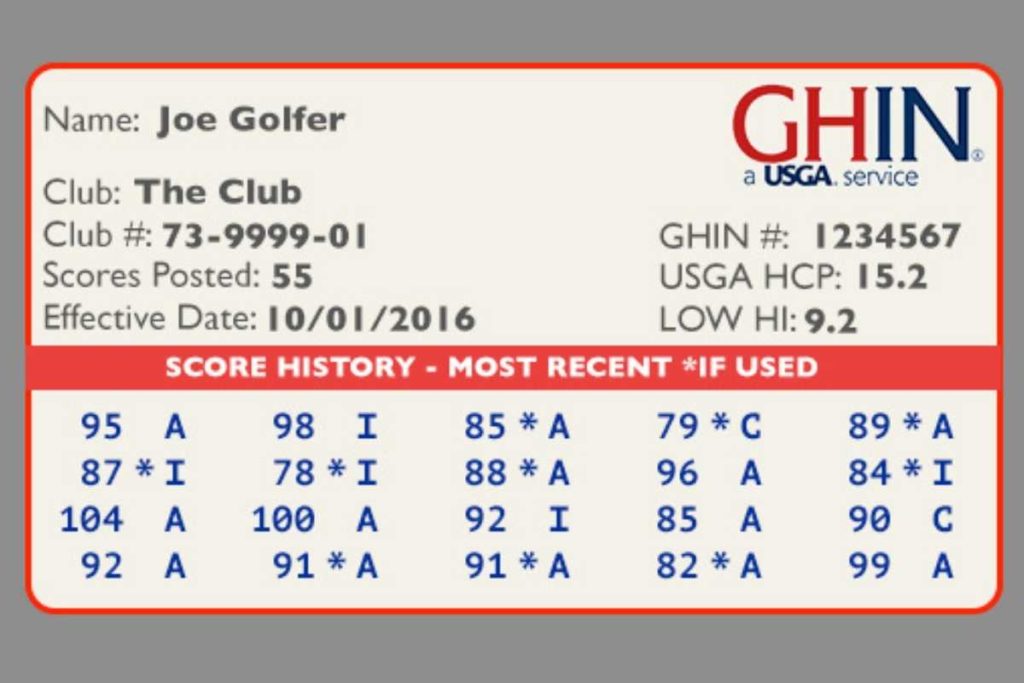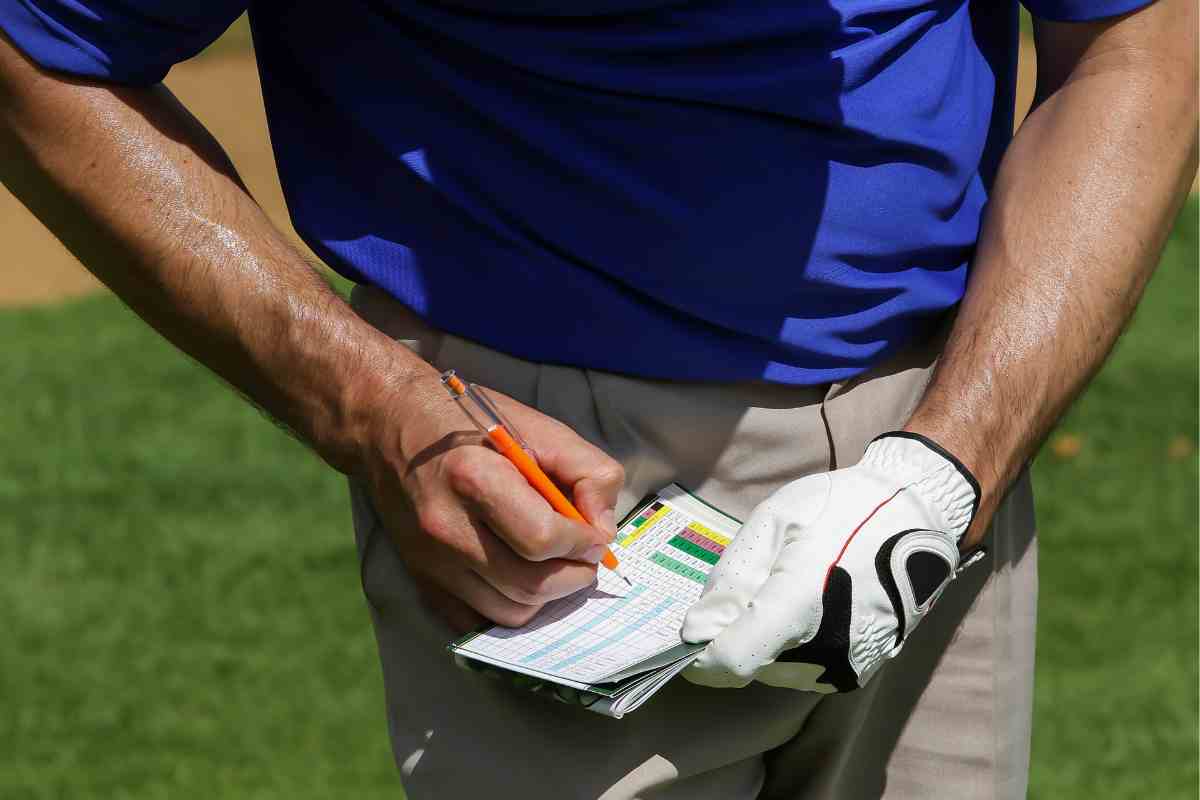A golf handicap measures a golfer’s ability or potential ability, allowing players of different skill levels to compete fairly against one another. If you’re new to the game or want to better understand how a golf handicap works, you’ve come to the right place.
Golf handicaps are an equalizer, making it possible for players with varied skill levels to compete in a fair competition. Tracking your handicap also lets you monitor your progress and skill improvements.
In this article, we’ll cover essential topics ranging from calculating your golf handicap to obtaining an official handicap index, all while keeping things simple and easy for beginners to comprehend.
Key Takeaways
- Golf handicaps allow players of varying abilities to compete on a level playing field.
- Calculating, using, and improving your golf handicap can enhance overall performance.
- An official handicap index is essential for participating in amateur tournaments and tracking progress.
What is a Golf Handicap?
A golf handicap is a numerical measure of a golfer’s skill level, calculated based on past performance. It allows players of different abilities to compete fairly against each other. A lower handicap indicates a more skilled player, while a higher one suggests a less experienced golfer.
When you have a low handicap, it means you are a more skilled golfer and need fewer extra strokes to achieve a par score. On the other hand, a high handicap indicates that you are a less skilled golfer and require more additional strokes to reach par. Handicaps can range up to a maximum of 54.
For example:
- Beginners might have handicaps around 36-54, as they are new to the game and require more strokes to play at par.
- Intermediate golfers could have handicaps between 10-36, reflecting improvement and better overall ability.
- Advanced golfers often have handicaps in a lower single-digit or approaching zero, as they are more experienced and skilled.
- Professional players and scratch golfers usually have handicaps close to or at 0, meaning they virtually receive no extra strokes and can play at par regularly.
It’s essential to know your golf handicap as it can be helpful for playing in tournaments and tracking your personal progress. By understanding how golf handicaps work, you can fairly compete with other golfers at different skill levels and enjoy the game to the fullest.
Golf Handicap vs. Handicap Index
A handicap in golf refers to the number of strokes a golfer needs to play to par on a particular course from a specific set of tees. It represents a golfer’s average score relative to par and is often used in casual conversations between players to gauge their skill levels.
However, a handicap index is a more official and portable measure of your playing ability, developed by the USGA and adopted by the World Handicap System, based on your previous scores.
Your handicap index can be used to calculate the course handicap for any course you play. To do this, the course and slope ratings come into play. The course rating is the expected score for a scratch golfer (having a handicap index of zero) on that particular course, while the slope rating indicates the relative difficulty of the course for bogey golfers (having a handicap index of around 20) in comparison to scratch golfers.
The formula for calculating your course handicap is (Course Handicap = Handicap Index × Slope Rating / 113 – Course Rating).
For example, imagine you have a handicap index of 10. On an easy course with a low slope rating, your course handicap might be 12. However, on a more challenging course with a high slope rating, your course handicap could rise to 15. This helps to account for the differences in difficulty between various courses and levels the playing field for golfers with varying abilities.
How To Calculate Your Golf Handicap

Calculating your golf handicap is complex math, and it’s easier said than done. Do yourself a favor and sign up to have your index calculated for you (more on this below).
Here are the steps if you really want to understand it:
- First, you need at least five scores from 18-hole rounds or ten scores from 9-hole rounds played on courses with valid ratings and slopes. You can use any combination of 9-hole and 18-hole scores as long as they add up to at least five 18-hole scores.
- Next, adjust your gross scores according to the rules of golf and the maximum hole score allowed for your handicap level. For example, if you have a handicap index of 20 or less, you cannot record more than a double bogey on any hole. If you have a handicap index of 21 or more, you cannot record more than seven strokes on any hole.
- Now, it’s time to calculate your score differential for each round. Use the formula: Score Differential = (Adjusted Gross Score – Course Rating – PCC Adjustment) x 113 / Slope Rating. The PCC adjustment is an optional factor that reflects the playing conditions on the day of the round, such as wind, rain, temperature, etc. It can range from -1 to +3 depending on how much harder or easier the course played than usual.
- Once you have your score differentials, find the average of your lowest score differentials, depending on how many scores you have. The more scores you have, the more score differentials you use, and the lower your handicap index will be. For example, if you have five scores, you use the lowest one; if you have 20 scores, you use the lowest eight.
- Finally, round your average score differential to the nearest tenth to get your handicap index. For example, if your average score differential is 15.24, you round it to 15.2; if it is 15.25, you round it to 15.3. Now you have your golf handicap!
How To Factor In Your Handicap When Scoring
To use your handicap in golf scoring, first calculate your course handicap using your handicap index, course rating, and slope rating. Tools like calculators or apps can help.
Apply your course handicap to your gross score to get your net score. You can either subtract your course handicap from your gross score or add it to the course par.
This net score lets you fairly compare your performance with others or evaluate your own game relative to the course. It’s a key part of golf that levels the playing field.
How To Improve Your Golf Handicap
To lower your golf handicap, focus on consistent practice in driving, iron play, short game, and putting. Consider coaching for personalized feedback. Play on varied courses to adapt to different conditions. Track your performance using apps or scorecards and set specific, achievable goals to measure your progress.
What Is a Good Golf Handicap for Beginners?
A golf handicap quantifies players’ skill, enabling fair competition across levels. For U.S. men, the average handicap is 14.2; for women, it’s 27.5. Beginners often start around 36 (men) and 40 (women). To improve, learn golf basics and etiquette, start on easier courses, and seek guidance from more experienced players. Most importantly, enjoy the game and remember that improvement comes with time and practice.
How To Obtain an Official Handicap Index
Obtaining an official Handicap Index can be accomplished through a United States Golf Association (USGA) authorized golf club or association.
To find an authorized club or association, you can check the USGA website or use the USGA’s online service, GHIN.com (Golf Handicap and Information Network), to join one. These clubs or associations are responsible for issuing official Handicap Indexes to eligible members.
Upon joining, you must pay the club or association an annual fee. Keep in mind that these fees may vary depending on the location and type of membership.
Once you have joined a USGA-authorized club or association, you must post at least three 18-hole or six 9-hole scores from courses with valid ratings and slopes within the current calendar year. Scores can be posted online, through an app, or at the club’s kiosk.
As a golfer seeking an official Handicap Index, you are expected to abide by the rules and procedures of the World Handicap System, which became the global standard for handicapping in 2020. Some of these rules and procedures include:
- Calculating your Handicap Index using the best eight score differentials out of the most recent 20 scores.
- Updating your Handicap Index daily based on your latest scores and revisions.
- Implementing a soft cap and a hard cap to limit extreme upward movement of your Handicap Index over 12 months.
- Adjusting your score differential for abnormal course and weather conditions using the PCC factor.
- Adhering to a maximum Handicap Index limit of 54.0 for both men and women.
Free Handicap Calculating Apps
Calculating your golf handicap can be pretty valuable, especially when you want to track your progress or participate in competitive events. There are numerous free apps available that can help you calculate your golf handicap without joining an official club or association.
It’s important to note that some tournaments or events may not accept unofficial handicaps calculated by these apps. However, they can still be valuable tools for less formal or casual golfers.
A few popular and reliable apps include:
- The Grint: The Grint is a free app that can calculate your USGA-compliant handicap index, track your stats and performance, book tee times, join golf leagues and more. The Grint offers portability and convenience for golfers who want an easy way to keep track of their handicaps.
- SwingU: Another free app, SwingU, can calculate your unofficial handicap, provide GPS distances, track your shots, analyze your swing, and offer personalized tips. SwingU is catered towards beginner golfers looking to improve their skills.
These apps provide the portability and convenience golfers value, helping you calculate your handicap on the go. With user-friendly interfaces, they are designed to be accessible and easy to understand, even for beginners.
While using an app may not have the same level of acceptance as obtaining an official handicap, it can be an excellent way to track your progress and gauge your performance as you improve your golf game.
Bottom Line
In summary, a golf handicap levels the playing field, enabling golfers of different skills to compete fairly. It’s calculated using factors like adjusted gross scores, course rating, and slope rating. An official handicap index can be obtained through USGA-authorized clubs and is essential for tournament play. Beginners can also use apps for a rough estimate. Understanding your handicap is key to tracking improvement and enjoying the game to its fullest. So, get your handicap and enrich your golf experience.




